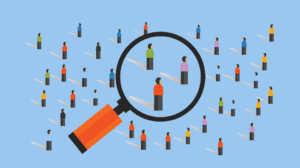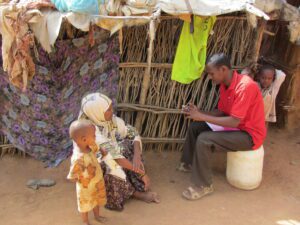Introduction
Monitoring and Evaluation (M&E) lie at the heart of every successful development project. In Uganda’s fast‑evolving NGO and government landscape, choosing the right M&E tools in uganda can mean the difference between impactful programs and stalled initiatives. This guide explores what M&E tools are, why they matter, and everything you need to know to select, deploy, and leverage them effectively.
M&E tools in uganda help organizations collect, manage, and analyze data to ensure projects meet their goals and deliver tangible benefits.
What Are M&E Tools?
M&E tools encompass software and M&E methodologies in Uganda that support the planning, data collection, visualization, analysis, and reporting needed for program oversight. In Uganda, these range from mobile data collection apps to cloud‑based dashboards.
When we speak of M&E tools in uganda, we refer both to global platforms and locally adapted solutions tailored to Ugandan contexts.
Why Are M&E Tools Important?
- Evidence‑Based Decision‑Making
Robust M&E tools in uganda turn raw data into actionable insights, empowering leaders to make informed choices rather than relying on anecdote. - Transparency and Accountability
With clear dashboards and audit trails, stakeholders—from funders to community members—can see exactly how resources are used. - Adaptive Management
Real‑time feedback loops allow teams to pivot strategies when indicators trend off target, maximizing impact on the ground.
Benefits of Using M&E Tools
- Efficiency: Automating repetitive tasks like data entry and report generation frees up staff time for analysis and fieldwork.
- Data Quality: Built‑in validation minimizes errors at the point of entry.
- Scalability: Whether you’re running a small pilot or a nationwide survey, M&E tools in uganda can scale with your project’s scope.
- Cost Savings: Cloud‑based M&E software often eliminates expensive server maintenance and reduces the need for physical storage.
These benefits make M&E tools in uganda essential for organizations seeking to optimize limited resources.
How Do M&E Tools Work?
Most platforms follow a similar workflow:
- Define Indicators: Set measurable targets and data collection schedules.
- Design Instruments: Create surveys, checklists, or forms.
- Collect Data: Use mobile apps or webforms—often offline‑capable—to gather field data.
- Aggregate Data: Sync submissions to a central database.
- Analyze & Visualize: Use built‑in analytics or export to BI tools like Power BI or Tableau Eval Community.
- Report & Share: Generate dashboards, infographics, and automated email updates for stakeholders.
By integrating these steps, M&E tools in uganda streamline the entire monitoring and evaluation cycle.
Key Features to Look For in M&E Tools
- Mobile Data Collection:
- Offline capabilities
- GPS and multimedia support
- Example: KoBoToolbox, a free, open‑source platform widely used in humanitarian settings Arqaam.
- Customizable Dashboards: Tailor visuals to different audiences.
- User Management & Permissions: Control who can view, edit, or export data.
- Data Security: Encryption in transit and at rest is critical.
- Integration Capabilities: APIs to connect with accounting, HR, or GIS systems.
- Automated Alerts & Reminders: Trigger SMS or email nudges to field teams when deadlines approach.
These features define the most robust M&E tools in uganda offerings on the market.
How Much Do M&E Tools Cost?
- Subscription‑Based: SaaS platforms often charge per user/month, ranging from USD 10 to USD 100 depending on features and scale.
- License Fee: Bigger enterprise tools may require an upfront license fee plus annual maintenance.
- Pay‑As‑You‑Go: Some providers offer credits for API calls or data storage.
For small NGOs in Uganda, expect monthly fees between USD 20–50 for a full mobile data collection package with analytics.
Free or Open‑Source M&E Tools
- KoBoToolbox: Completely free and ideal for NGOs operating on tight budgets Arqaam.
- Open Data Kit (ODK): Open‑source suite supporting offline surveys and complex skip logic Insight7.
- DHIS2: A health‑sector favorite, DHIS2 is free and widely used for public health reporting, now expanding into general M&E Wikipedia.
These M&E tools in uganda empower organizations without the burden of licensing costs.
How to Choose the Right M&E Tool
- Assess Your Needs: Number of users, data volume, connectivity constraints.
- Pilot Multiple Platforms: Run a small test in the field.
- Evaluate Support & Training: Does the vendor offer onboarding in Uganda?
- Check References: Speak with peers who have implemented in similar contexts.
A structured selection process ensures you pick M&E tools in uganda that fit your workflow and budget.
Tracking Project Progress and Outcomes
- Real‑Time Dashboards: Visualize key performance indicators as they update in the field.
- Geospatial Mapping: Pinpoint where activities are taking place and overlay community data.
- Automated Reports: Schedule weekly or monthly summaries to stakeholders.
These functionalities in M&E tools in uganda highlight project strengths, expose gaps early, and promote accountability.
Latest Trends in M&E Tools and Technologies
- AI & Machine Learning: Predictive analytics to forecast project success rates.
- Blockchain: Immutable ledgers for transparent fund tracking.
- Chatbot Surveys: Conversational data collection via WhatsApp or Telegram.
- Internet of Things (IoT): Sensor‑based monitoring for environmental or health indicators.
Staying abreast of these trends ensures your M&E tools in uganda remain cutting‑edge and future‑proof.
FAQs
What are M&E tools?
M&E tools are software and methodologies that aid in planning, collecting, analyzing, and reporting data to assess program performance and impact Data For Development.
M&E tools in uganda include both global platforms and locally hosted solutions tailored to Uganda’s infrastructure.
Why are M&E tools important?
They enable evidence‑based decisions, enhance transparency, and support adaptive management by providing real‑time insights into project progress.
What are the benefits of using M&E tools?
Efficiency, data quality, scalability, and cost savings are among the top benefits of modern M&E tools in uganda.
How do M&E tools work?
Follow a cycle of defining indicators, designing instruments, collecting and aggregating data, analyzing, and reporting.
What are the key features to look for in M&E tools?
Look for mobile data collection, customizable dashboards, strong security, integration capabilities, and automated alerts.
How much do M&E tools cost?
Costs range from free (open‑source) to USD 10–100 per user per month for SaaS, plus potential setup fees.
Are there free or open‑source M&E tools available?
Yes—KoBoToolbox, ODK, and DHIS2 are all free and widely used in Uganda.
How do you choose the right M&E tool for your needs?
Assess your project requirements, pilot solutions, evaluate vendor support, and consult peer references.
How do M&E tools help in tracking project progress and outcomes?
They offer real‑time dashboards, geospatial mapping, and automated reporting to monitor KPIs and outcomes.
What are the latest trends in M&E tools and technologies?
AI, blockchain, chatbot surveys, and IoT are shaping the future of M&E tools in uganda.






